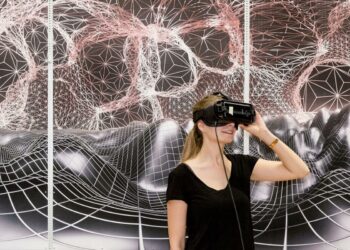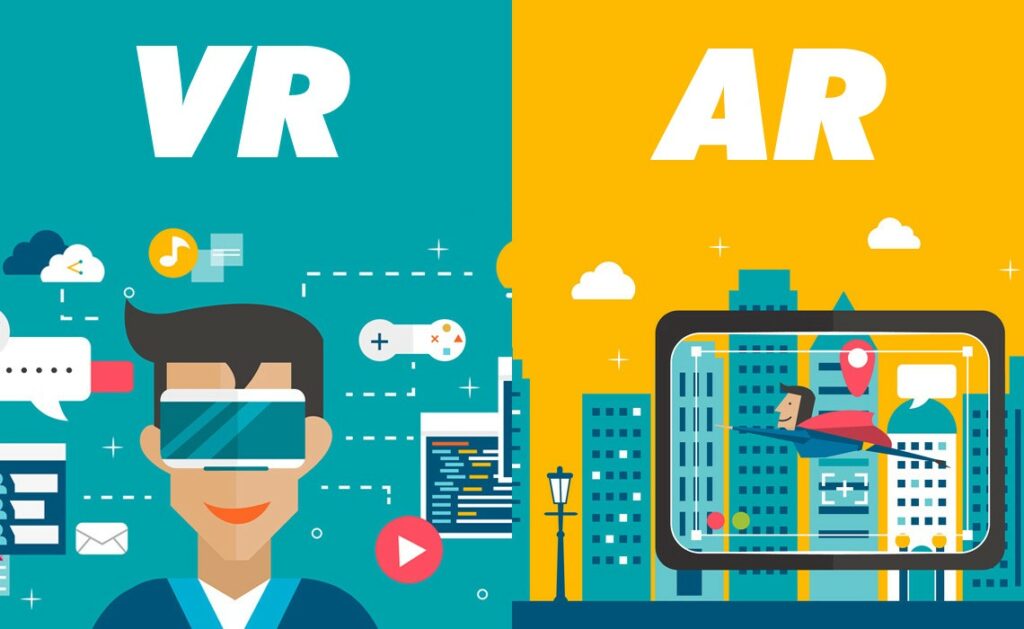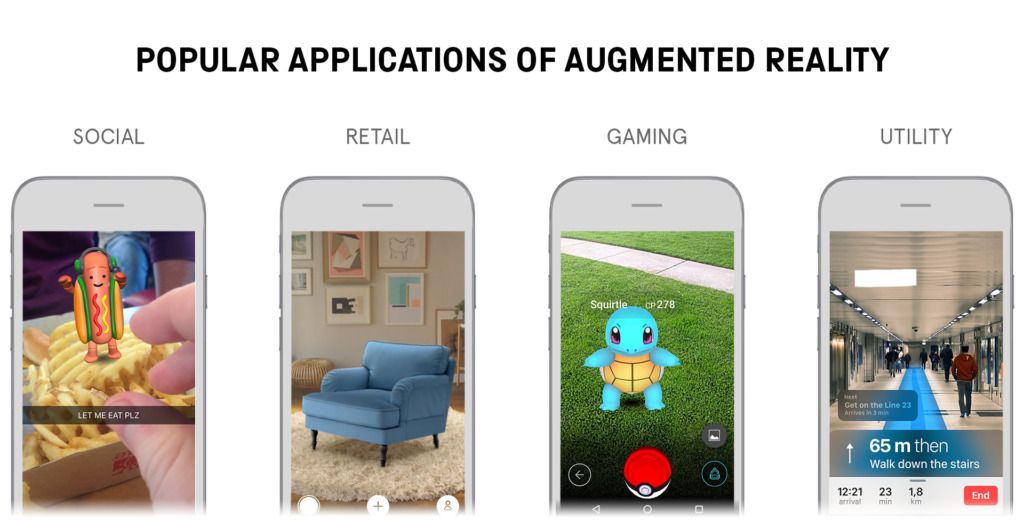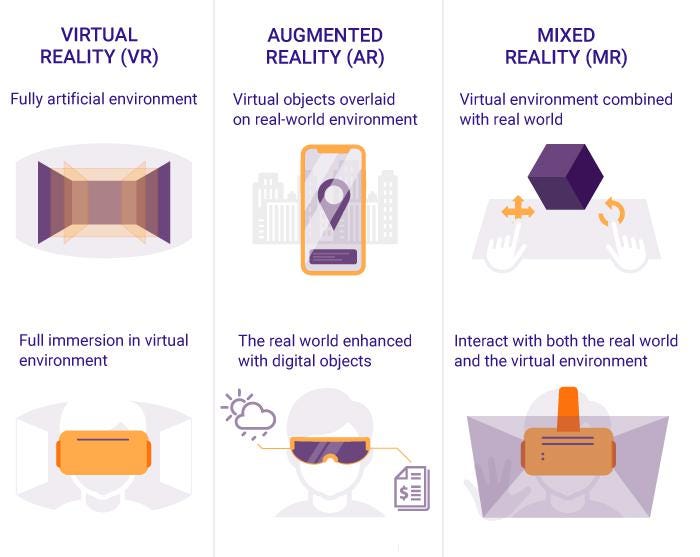Let’s start with the basics. We first must know the difference between these technologies, to be able to adapt future projects to the right environment.
Reality as a construct
What we perceive with our senses seems to be reality, whether what we perceive comes from the digital or the physical world. Take for instance watching a movie, we know it is not real, but it feels real to us. It triggers emotions, we feel empathetic to characters and we create connections with them.
It’s really important to understand we’re not seeing reality. We’re seeing a story that’s being created for us.
– Patrick Cavanagh, Research Professor
The virtuality continuum is a scale that goes from reality to virtuality. In it, technologies can be categorised by how immersive they are. The virtuality continuum is a theoretical framework introduced in 1994 by Paul Milgram and Fumio Kishino. It helps us visualize and understand the differences between the various technologies that exist today.
XR
Extended Reality is the real-world environment with technology overlapping, it includes AR, MR and VR. It is blurring the line between the physical and the digital world. The technologies AR and MR overlap with reality and thus also create different impressions and impact towards the environment. We could see that when Pokémon Go came out.
There are no mental models in how to interact in XR, it’s a new area and a lot has to be designed, tested and standardized.
AR
Augmented reality allows us to overlay digital elements into the real world. Using a screen that display real surroundings with digital elements, but they don’t interact in any way. It has its limitations but is still extremely powerful, not for immersive environments but can be used as a tool for solving problems.
MR
Mixed Reality goes a bit further because the digital overlay can interact with the physical world. MR gets input from the environment and will change according to it. It removes the boundaries between real and virtual interaction via occlusion. Your physical surroundings become your boundaries. The lines here became blurry what really exists and what seems to exist in the real worlds.
VR
Like the name suggests Virtual Reality is an immersive digital environment and the physical world has no part in it. VR takes advantage of the visual and auditory systems, this world seems real to us.
The perception of our environment has a huge effect on us. We should keep that in mind. VR should never be too intense for us to handle, like standing on a plank at the top of a skyscraper and looking down. We need to feel save when entering a new world. Participants should always know that the extensions aren’t real but can still enjoy the journey. Like watching a movie.
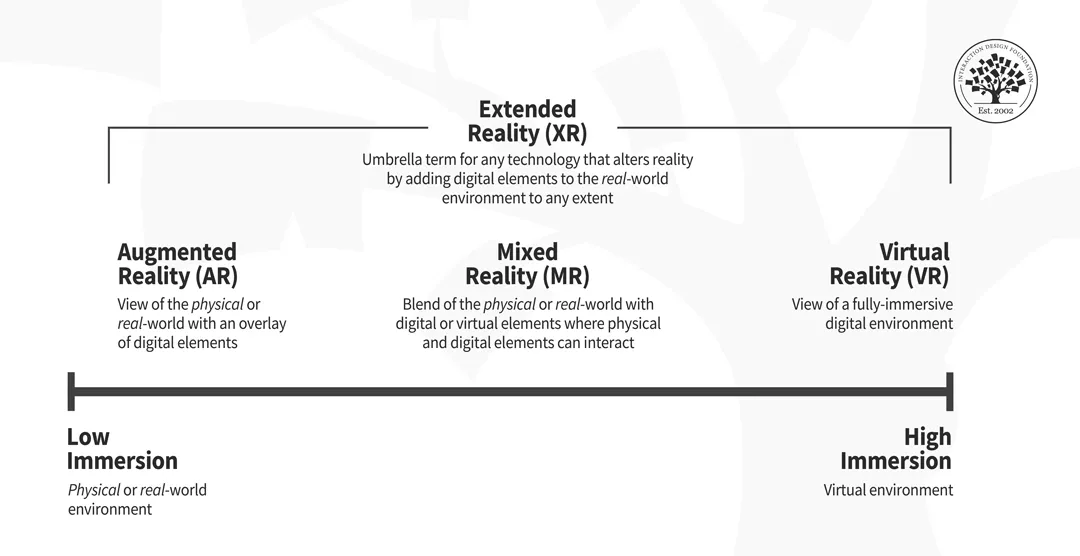
References:
Beyond AR vs. VR: What is the Difference between AR vs. MR vs. VR vs. XR? https://www.interaction-design.org/literature/article/beyond-ar-vs-vr-what-is-the-difference-between-ar-vs-mr-vs-vr-vs-xr
XR: VR, AR, MR—What’s the Difference? https://www.viget.com/articles/xr-vr-ar-mr-whats-the-difference/
